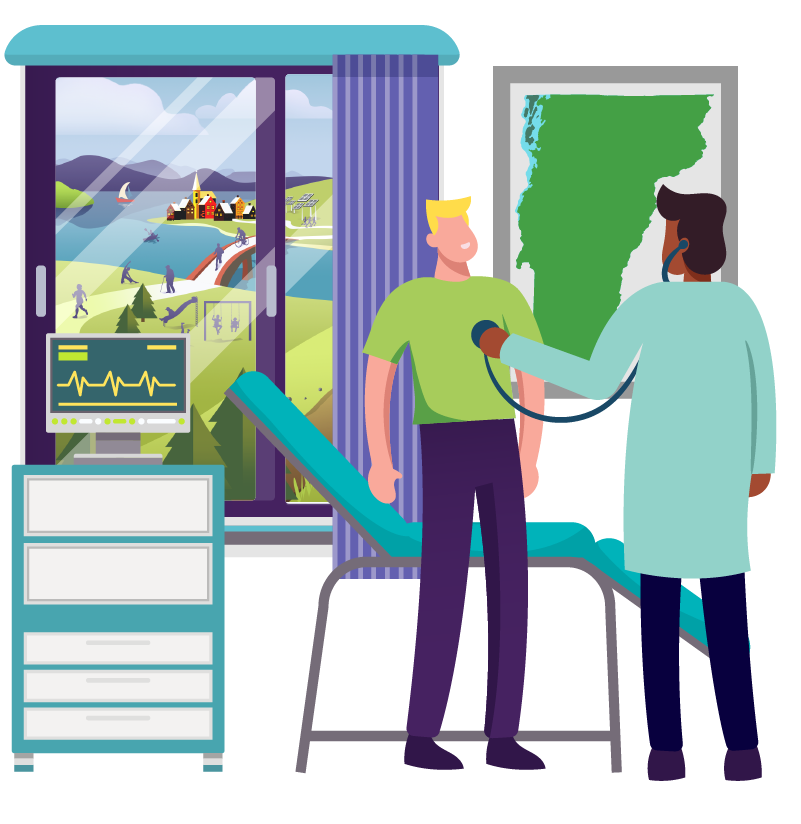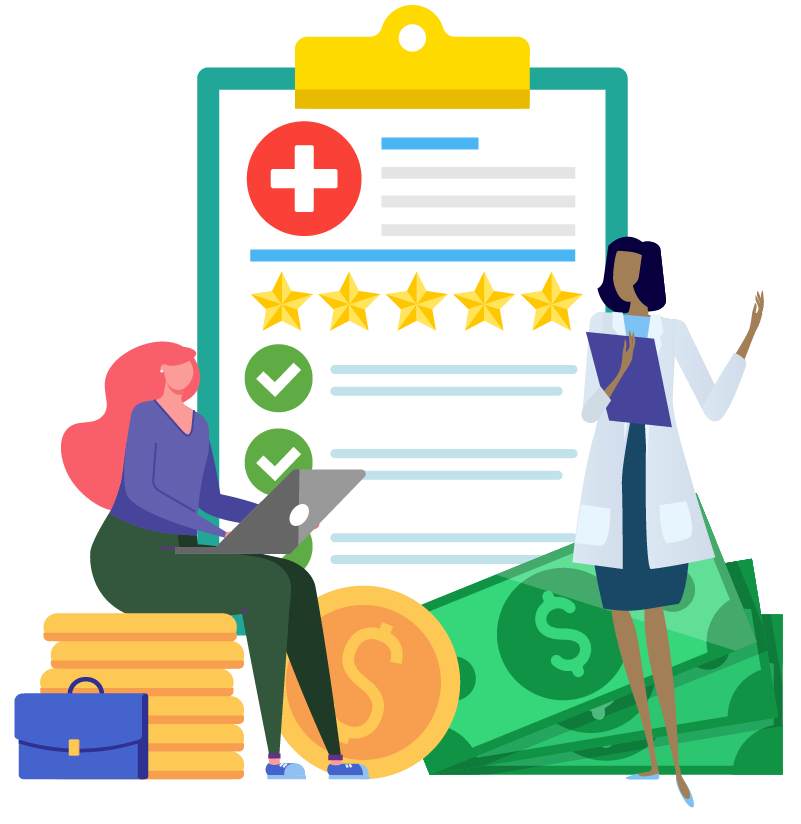Data and Analytics
OneCare Vermont uses data and analytics to measure health care cost, quality, and utilization to help providers identify which Vermonters need outreach and which areas of care delivery to improve.
OneCare brings data together from different parts of health care: health care services, insurance claims, medical records, pharmacies, and hospital visits. OneCare then helps providers use the insights gleaned from these data to quickly adapt to evolving health needs in their communities. Providers who participate in OneCare benefit from OneCare’s data about not just their practice, but also their region, the state, and how they compare. Using this data, health care providers can look at the health of the Vermonters they care for as well as their community and develop strategies to help everyone in their care become and stay healthy.
Data also help providers examine a critical aspect of health care: cost. Using data, we can help lower costs for care that is both unnecessary and expensive by investing in preventive care, avoiding duplicate tests, or waiving a requirement that patients spend days in the hospital before transitioning to skilled nursing care when the hospital stay is not needed.
OneCare Data & Analytics in Action
By partnering with OneCare, we were able to use data that helped us shape how we deliver care. Our diabetic community had A1C levels [a type of blood sugar measure] that were not well controlled. The data showed to us that we needed to do something different. Together, our team decided the best approach would be to embed a nurse practitioner who was focused on diabetes and lifestyle medicine, within BMH, to serve as a resource for our primary care practices. As a result, we have seen A1C levels go down dramatically. It’s important that we continue with this work.
Data & Analytics Bonus Video: Identifying Patients with Hypertension
Learn another example of how our data gave providers at BMH information they can’t get from their own electronic medical records (EMRs), allowing them to identify patients with hypertension, conduct outreach, and develop care plans to improve health outcomes.
Data & Analytics Bonus Video: Reducing Diabetes
Eilidh Pederson gives another example of how Brattleboro Memorial Hospital (BMH) used OneCare data to identify that BMH’s diabetic population had very high A1C (blood sugar) levels, inspiring innovation in care and leading to a dramatic reduction in A1C levels and improvement in health outcomes.
Data & Analytics Bonus Video: Medicare Hospice Beneficiary Use
Eilidh Pederson gives another example of how Brattleboro Memorial Hospital (BMH) used OneCare data to identify Medicare beneficiaries who are eligible for end of life care.
Data & Analytics Link to Two Other Core Capabilities

Core Capability #1:
Network Performance Management
Once contracts are put in place between payers and OneCare participating providers, our network performance management core capability works to support providers to succeed in their contracts, improving quality of care and reducing health care spending.
Specifically, OneCare’s care coordination and quality improvement support providers, and both require data and analytics to identify patients that could benefit from care coordination and specific quality improvement measures to implement.

Core Capability #3:
Payment Reform
OneCare works with insurers and providers to change how health care services are paid. Under this model, providers can accept regular fixed predictable payments for each patient instead of getting paid for each test or service they perform, and are rewarded based on quality outcomes. When providers are reimbursed for value instead of volume, over time, they can change the way they deliver health care and invest in activities that are designed to lead to better health outcomes—primary care, health prevention, early identification of disease, and the right treatment at the right time.
OneCare data and analytics helps identify care with the highest cost so providers can prioritize their efforts on quality improvement that will have the biggest impact on cost of care.
